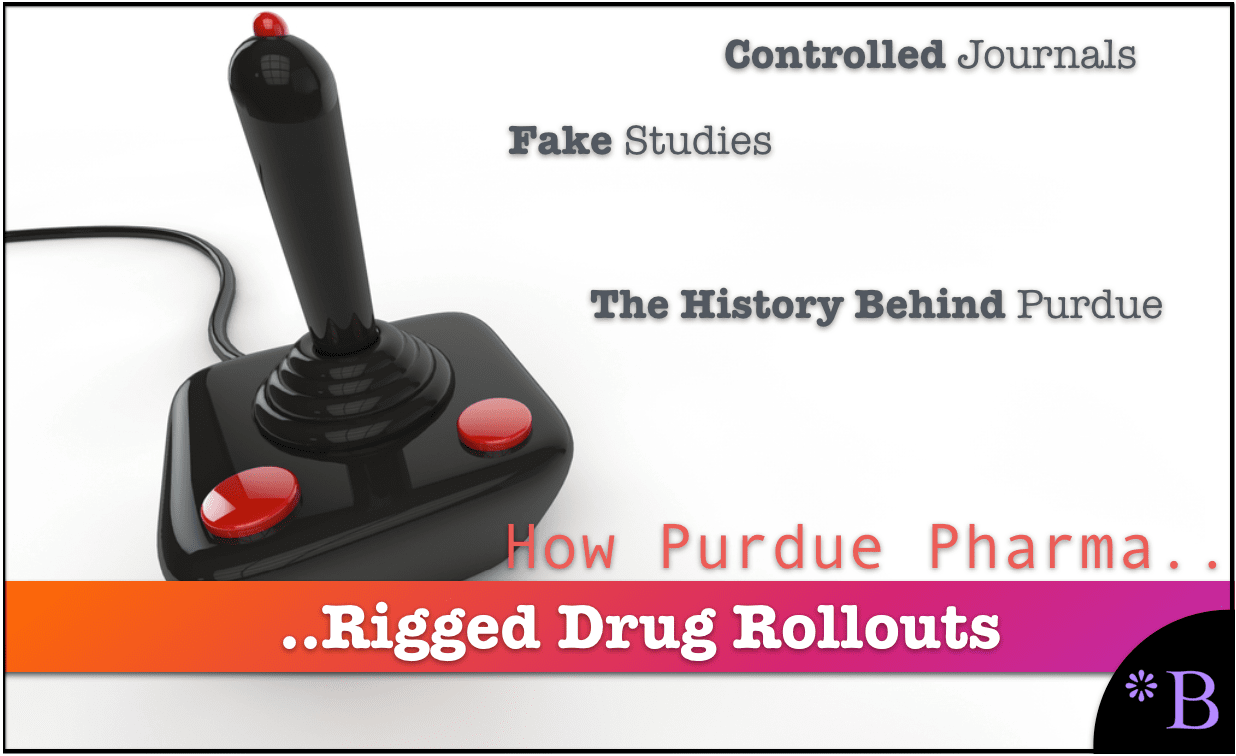How Purdue Pharma Created the Opioid Epidemic
Executive Summary
- Purdue Pharma was behind the opioid epidemic.
- Purdue had a long history of running a rigged drug system.

Introduction
Purdue Pharma had a system for rigging the development and rollout of their drugs for decades. This is the same company that is responsible for the opioid crisis. How Purdue Pharma did this is critical to understanding the opioid crisis.
Our References for This Article
If you want to see our references for this article and related Brightwork articles, visit this link.
A Description of Opioids
The following is a good description of opioids.
Common semi-Synthetic Opioids include Percocet, Vicodin, and OxyContin.
These medications are generally used to treat moderate to severe pain, although some can be prescribed for coughing and diarrhea. These drugs are highly addictive and present a high risk of misuse. Semi-Synthetic Opioid misuse can cause slowed breathing, which often results in hypoxia, a condition that results when too little oxygen reaches the brain. Hypoxia can induce coma, permanent brain damage, and even death. – Addiction Center
It is jaw-dropping that the opioid manufacturers extended opioid approval for coughing and diarrhea. This is referred to as “Evergreening,” where the pharmaceutical company makes successive applications to extend the drug for different conditions.
To understand opioids, it is important to understand heroin.
According to the CDC, the number of Heroin users has more than doubled; approximately 80% of new users are coming to Heroin after having abused prescription Opioids. According to the CDC, almost 33% of all Opioid fatalities are linked to Heroin. – Addiction Center
So the opioid epidemic, which is the fault of the pharmaceutical industry, drug distributors, MDs, the FDA (the US congress, which restricted the DEA from prosecuting opioid manufacturers), and the overall medical establishment, eventually led to a great rise in the use of heroin. The pharmaceutical industry and medical establishment have taken no responsibility for this.
Understanding the Company Behind the Opioid Epidemic
The opioid epidemic fails the health system to control corruption and was extensively promoted by the Sacklers and Purdue Pharma, which actively pushed opioids targeting doctors with financial needs to addict enormous numbers of US citizens to opioids.
This is explained in the following quotation.
Purdue launched OxyContin with a marketing campaign that attempted to counter this attitude and change the prescribing habits of doctors. The company funded research and paid doctors to make the case that concerns about opioid addiction were overblown, and that OxyContin could safely treat an ever-wider range of maladies. Sales representatives marketed OxyContin as a product “to start with and to stay with.” Millions of patients found the drug to be a vital salve for excruciating pain. But many others grew so hooked on it that, between doses, they experienced debilitating withdrawal.
But OxyContin is a controversial drug. Its sole active ingredient is oxycodone, a chemical cousin of heroin which is up to twice as powerful as morphine. In the past, doctors had been reluctant to prescribe strong opioids—as synthetic drugs derived from opium are known—except for acute cancer pain and end-of-life palliative care, because of a long-standing, and well-founded, fear about the addictive properties of these drugs. “Few drugs are as dangerous as the opioids,” David Kessler, the former commissioner of the Food and Drug Administration, told me.
Andrew Kolodny, the co-director of the Opioid Policy Research Collaborative, at Brandeis University, has worked with hundreds of patients addicted to opioids. He told me that, though many fatal overdoses have resulted from opioids other than OxyContin, the crisis was initially precipitated by a shift in the culture of prescribing—a shift carefully engineered by Purdue. “If you look at the prescribing trends for all the different opioids, it’s in 1996 that prescribing really takes off,” Kolodny said. “It’s not a coincidence. That was the year Purdue launched a multifaceted campaign that misinformed the medical community about the risks.” When I asked Kolodny how much of the blame Purdue bears for the current public-health crisis, he responded, “The lion’s share.” – The New Yorker
There is much more to this topic. But Purdue Pharmaceutical marketed oxycontin as safe, even though it had been known for decades that it was not safe. Their primary innovation with the drug was to make it time-released.
However, even before Purdue Pharma came up with Oxycotin, it had a system for developing and getting drugs approved that was entirely corrupt.
This is explained in the following quotation.
In the early sixties, Estes Kefauver, a Tennessee senator, chaired a subcommittee that looked into the pharmaceutical industry, which was growing rapidly. Kefauver, who had previously investigated the Mafia, was especially intrigued by the Sackler brothers. A memo prepared by Kefauver’s staff noted, “The Sackler empire is a completely integrated operation in that it can devise a new drug in its drug development enterprise, have the drug clinically tested and secure favorable reports on the drug from the various hospitals with which they have connections, conceive the advertising approach and prepare the actual advertising copy with which to promote the drug, have the clinical articles as well as advertising copy published in their own medical journals, [and] prepare and plant articles in newspapers and magazines.” – The New Yorker
The best way of thinking of this is “vertical integration.” No independent party was involved from the drug’s development to the study.
It should be apparent that it is impossible to hide such a system for very long. However, the Sackler family and Purdue Pharma could continue operations without any department from the US government taking any interest.
How Purdue Pharma Targeted Doctors With Limited Pain Treatment Experience
Purdue Pharma looked for doctors they could take advantage of, as is explained in the following quotation.